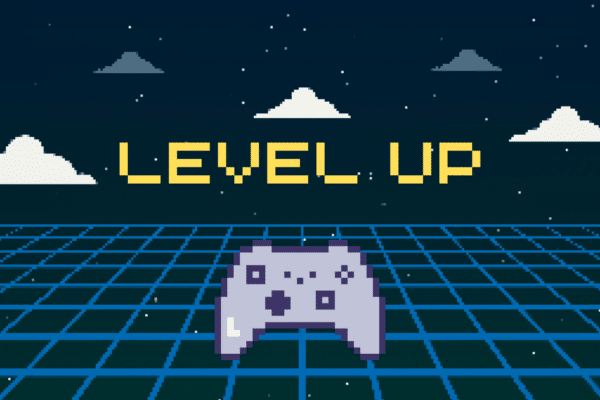5 trends in teaching: ideas for professional development
Imagine you are feeling a little feverish. What do you do? Bloodletting, of course! You Google the nearest barbershop and get an Uber there so the barber can slash a vein and cure you by removing foul humours from your body. If you’re lucky, they may even use leeches! This may sound absurd to you, but the role of professions changes over time. The teaching profession wouldn’t be any different.
Beginning on a very personal example, I’ve been deeply affected by recent changes in mindset and communication. The abilities Andreia Zakime and I have been developing to make whatiselt.com happen (video and sound editing, web design, search engine optimization, motion graphics design etc.) are not really part of the typical essential skill set in a handbook for teacher trainers or academic coordinators.
Obviously, not all teacher trainers need to learn these specific skills to be relevant in 2020, but that’s what makes our times special: more than ever in History, we are free to create our own unique professional journey. We can identify more easily the needs of our learners and pick and choose from an endless pool of skills, tools and solutions to create our unique professional persona and CPD track.
A few month ago, Carlos Trindade wrote a great post here, where he described the mindset of the 21st-century teacher and asked a daring question: Are teachers obsolete? (read it here). I’d like to share my perceptions of #trendingtopics in teaching careers: ideas that may be worth thinking about and investing time and effort in.

Become more tech-savvy
Many of us associate technology with a complex LMS, or a custom app. These tended to be expensive solutions that went well with big institutions rather than the independent or individual teacher. However, the popularisation of cheaper (or free) solutions, such as Google Classroom, Edmodo and Moodle mean that we can all have access to online learning technologies that can help us manage content, interaction and learning.
However, a lot of interesting uses of technology come not from software developed specifically for learning, but from subverting technology created for “real life” and using it in the classroom. From your favourite social media to augmented reality, resourceful teachers can find a classroom use to virtually any everyday technology (even virtual reality, that a few years ago seemed far-fetched, are viable nowadays, as you can see from this account by Raquel Ribeiro).

Use English as a way to solving real-life problems
Problem-solving is an essential 21st-century skill and one of the most valued skills in the professional world, so our students have the need to develop that. In fact, as many schools adopt approaches to teaching that involve integrating different areas of knowledge and skills to find solutions to everyday problems, this is becoming a more familiar way of learning to our students.
The idea is not new: Task-Based Learning has been around as an idea for ages. CLIL and TBL, as well as other BLs (Project-Based Learning, Problem-based Learning – and even Zombie-Based Learning?!?) are becoming more and more frequent topics of discussion and investigation in education conferences. So much so that I dare say acquiring knowledge about these approaches is not even a future trend, but a very present one.

Focus on communication rather than structure
The way we learn is changing and gone are the days where you needed a mentor or a formal course to learn anything. We can learn anything from YouTube and online tutorials. Clearly, we might not become experts in carpentry, but we sure can learn enough to give our bedside table a makeover. With obvious exceptions, many of our learners don’t want to learn everything there is to know about the English language (or mastering carpentry), they just need to get by in communicative situations they face (refurbish the bedside table).
That means that the way most of us learned ABOUT the language at University or English course is not really relevant to many of our learners. So, the relevance of explicitly teaching the complex patterns of change in word stress when a suffix or prefix is added to a word (or listing all the different uses of the present perfect) is debatable. Rather than focusing on language items as goals and outcomes, learning can be more meaningful and engaging if we hone in on how to use the language to communicate effectively. Again, more of a present high-time-we-did-it trend rather than a future one.

Teach young learners
As schools and governments invest more heavily in English teaching during elementary and secondary education, more and more learners will have achieved the desired level of English by the time they go to higher education. The British Council estimates that by 2025, changes in demographics will account for a 15% drop in demand for English learning in the age group between 15 and 34 y.o. and a 16% drop among 35-55 y.o. learners in Europe.
Of course, the demands may vary tremendously from country to country according to local contexts, and changes in birth rate and improvement in English proficiency may take longer in other parts of the world. Nonetheless, it would be wise to bear in mind when planning your career, especially if we intend to remain active as an English teacher for a long time.

Vary what you learn
The job market in our century definitely seems more dynamic than in the past. And career paths are no different. The 2018 Deloitte Global Human Capital Trends report paints a picture of careers looking less like an upward staircase and more like a network of different experiences (frequently with various employers and roles), which allow the person to “acquire new skills, perspectives and judgment”.
In this more fluid setting with more informal and short-term contracts, skills like writing, research, problem-solving and teamwork are becoming increasingly relevant. Although technical knowledge (in our case, knowledge about language and teaching) are still essential, job opportunities will require unique mix of skills. Therefore, we should be looking to diversify our skills set, blending different areas of interest into our own unique portfolio of know-how, knowledge and expertise.
Reference:






